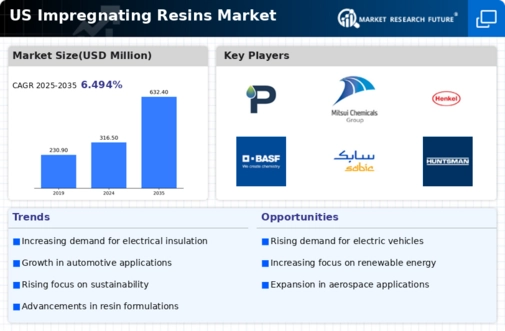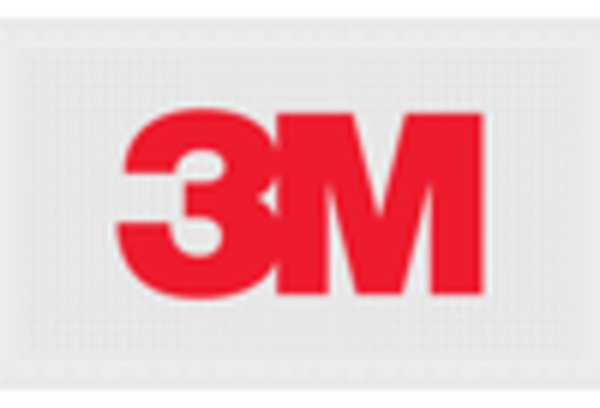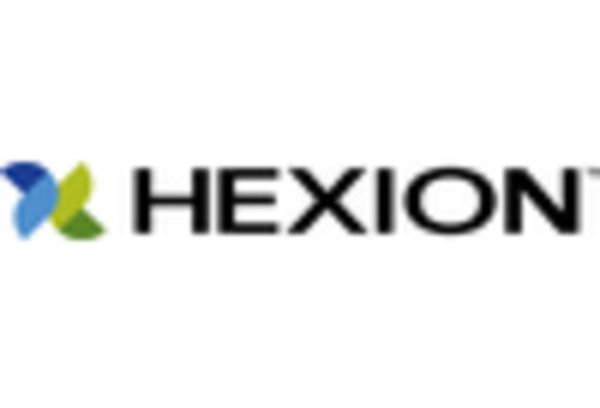The impregnating resins market is characterized by a competitive landscape that is increasingly shaped by innovation, sustainability, and strategic partnerships. Key players such as Hexion Inc (US), BASF SE (DE), and Huntsman Corporation (US) are actively pursuing strategies that emphasize technological advancements and market expansion. Hexion Inc (US) has focused on enhancing its product portfolio through research and development, aiming to meet the growing demand for high-performance resins in various applications. Meanwhile, BASF SE (DE) has been investing in sustainable practices, aligning its operations with environmental regulations and consumer preferences for eco-friendly products. Huntsman Corporation (US) appears to be leveraging its global presence to optimize supply chains and enhance customer service, thereby solidifying its market position.
The business tactics employed by these companies reflect a moderately fragmented market structure, where localized manufacturing and supply chain optimization are pivotal. The collective influence of these key players is significant, as they not only drive innovation but also set industry standards that smaller competitors must follow. This dynamic fosters a competitive environment where agility and responsiveness to market changes are crucial for success.
In October 2025, Hexion Inc (US) announced the launch of a new line of bio-based impregnating resins aimed at reducing environmental impact. This strategic move is likely to enhance Hexion's market share by appealing to environmentally conscious consumers and industries, thereby positioning the company as a leader in sustainable resin solutions. The introduction of these products may also stimulate further innovation within the sector, as competitors respond to the growing demand for sustainable materials.
In September 2025, BASF SE (DE) expanded its production capacity for impregnating resins in North America, a decision that underscores its commitment to meeting increasing market demand. This expansion is expected to improve supply chain efficiency and reduce lead times for customers, thereby enhancing BASF's competitive edge. The strategic importance of this move lies in its potential to solidify BASF's position as a key supplier in the region, particularly in sectors such as automotive and electronics, where high-performance materials are critical.
In August 2025, Huntsman Corporation (US) entered into a strategic partnership with a leading technology firm to integrate AI-driven analytics into its manufacturing processes. This collaboration aims to optimize production efficiency and reduce waste, aligning with the industry's shift towards digital transformation. The implications of this partnership are profound, as it not only enhances Huntsman's operational capabilities but also sets a precedent for other companies in the market to adopt similar technologies.
As of November 2025, the competitive trends in the impregnating resins market are increasingly defined by digitalization, sustainability, and the integration of advanced technologies. Strategic alliances are becoming more prevalent, as companies recognize the need to collaborate in order to innovate and meet evolving consumer demands. Looking ahead, it is anticipated that competitive differentiation will increasingly pivot from price-based strategies to those centered on innovation, technological advancement, and supply chain reliability. This shift may redefine the competitive landscape, compelling companies to invest in R&D and sustainable practices to maintain their market positions.

















Leave a Comment